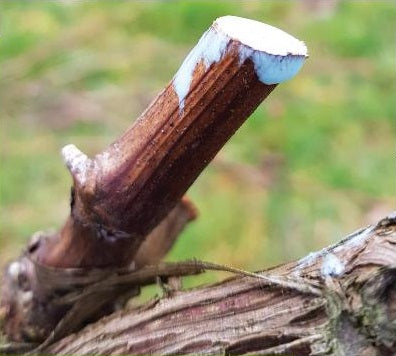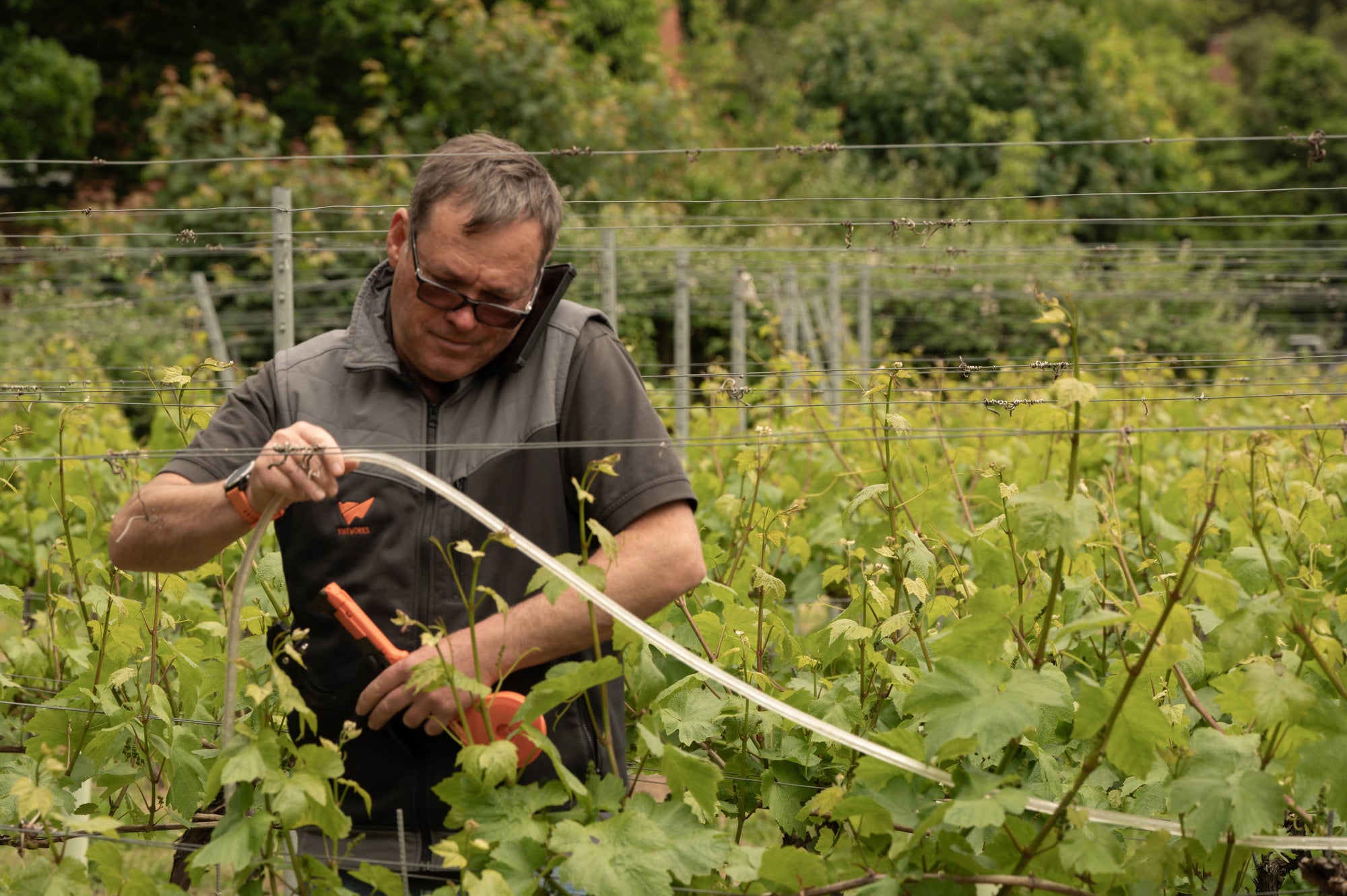Field Trial of Three Wound Paints
While it would be incorrect of me to call this a full scale scientific trial the tests were carried out in field conditions. All products were applied to fresh pruning cuts in cool dry conditions using a designated a brush.

First, we tested a new product manufactured by local fertiliser manufacturer Solufeed. Their garlic barrier was produced with the organic sector in mind and has soil association approval. It’s manufactured from garlic extract, contains bio-stimulants and ‘sticker’s’ plus green colourant. It contains high levels of Sulphur, Selenium, (to counteract abiotic stress) and Allicin (garlic’s odorous defence mechanism). The paint was easy to apply, but remained sticky after 24 hours. Consequently, it can only be used in dry conditions and the longevity of its protective properties may be questionable. After one month the product was found to be flaky and had the thinnest coating of the three products tried. Garlic barrier costs £75.38 per 5L and should be sufficient for 10,000 vines with three wound points, equating to £0.0075 per vine, the most costly of the three products tested.
The next product tested was Podex. This is another new product, produced by Daymsa in Spain, (CAAE approved in Spain, UK approval applied for). The paint is latex based with some unspecified bio-stimulants plus blue colorant. The paint was easy to use direct from the tub and was completely dry within 24 hours. My experience was 1kg was sufficient for 2500 vines with approximately three wound points on each plant. After one month the paint maintained a rigid coating. Price point was £6.20 per litre, equating approximately to £0.0024 per vine.
The final product to be tested was Bloccade from Hortipro. Bloccade is essentially acrylic paint with pink colourant, wetters and stickers. It has the advantage of being dilutable at a ratio of 1 to 9. Due to its thin viscosity, Bloccade can be used with a brush, hand sprayers or apparently the Felco 19 has a built-in dispenser (though I’ve yet to see anyone use this!). The price for Bloccade is £27.30 and if diluted should equate to £0.0014 per vine. Clearly this is the most cost effective option and is the most widely available. After one month coating remained rigid.
I’d suggest that any wound paint would be considerably more effective with an active ingredient added to the mix, however what’s permissible is a question for your agronomist…
Nonetheless, when you’re pruning, it’s preferable to avoid big cuts and large desiccated dead wood, leave sufficient die back wood. At Vine-Works Ltd, we work on the principal that a section of die back wood should be left with a length equal to the diameter of the section pruned, i.e. 10cm cane leave 10cm die back. It’s conventional wisdom that cuts are made only on dry days, (save pulling out for wet days) as wounds are more liable to infection in wet conditions. Clearly whichever product you use for wound protection it’s preferable to use something rather than nothing.
Maybe next issue will be how to deal with those canes left in the alleys…




